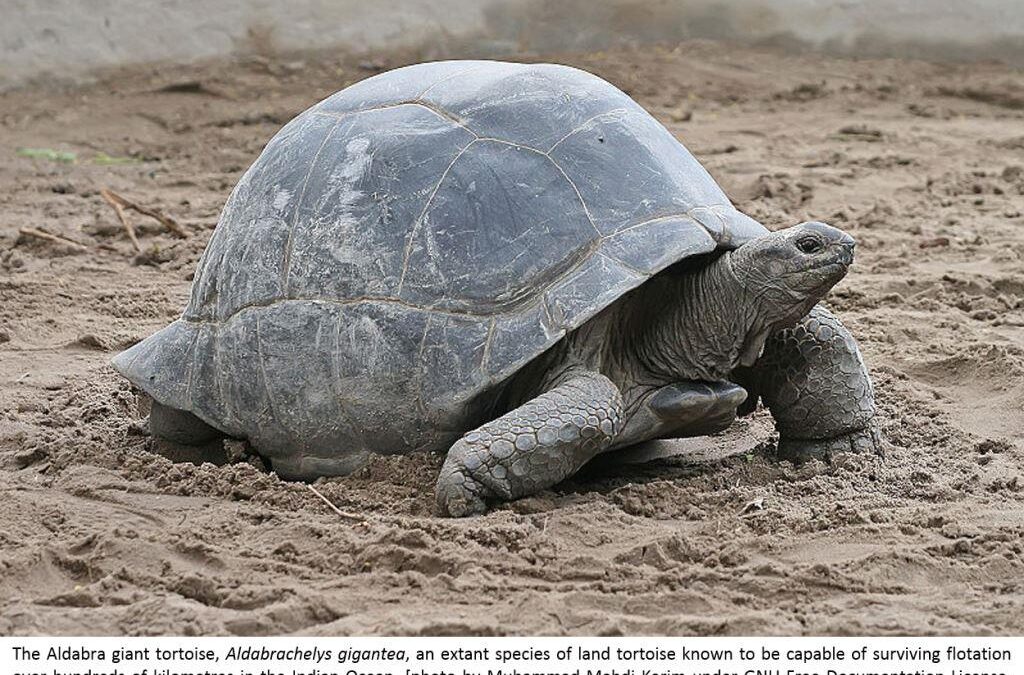Tracking down the testudines missing from a whole continent demands plodding logic rather than leaping conclusions.
Land tortoises[1] are fully terrestrial, mainly plant-eating members of the Order Testudines. Oddly, Australia – despite having an impressive radiation of two suborders[2] and eight genera of amphibious testudines – today lacks land tortoises or convergent reptiles derived from other lineages. There are two possible explanations for this lack.
The first seems obvious: suitable ancestors simply didn’t reach the island continent, leaving the niches of land tortoises empty. The alternative explanation is more intriguing: potential ancestors were present but found ecological conditions unsuitable. Could these reptiles have failed because the niches in question are non-existent in Australia and New Guinea regardless of which lineage has been available to fill them?
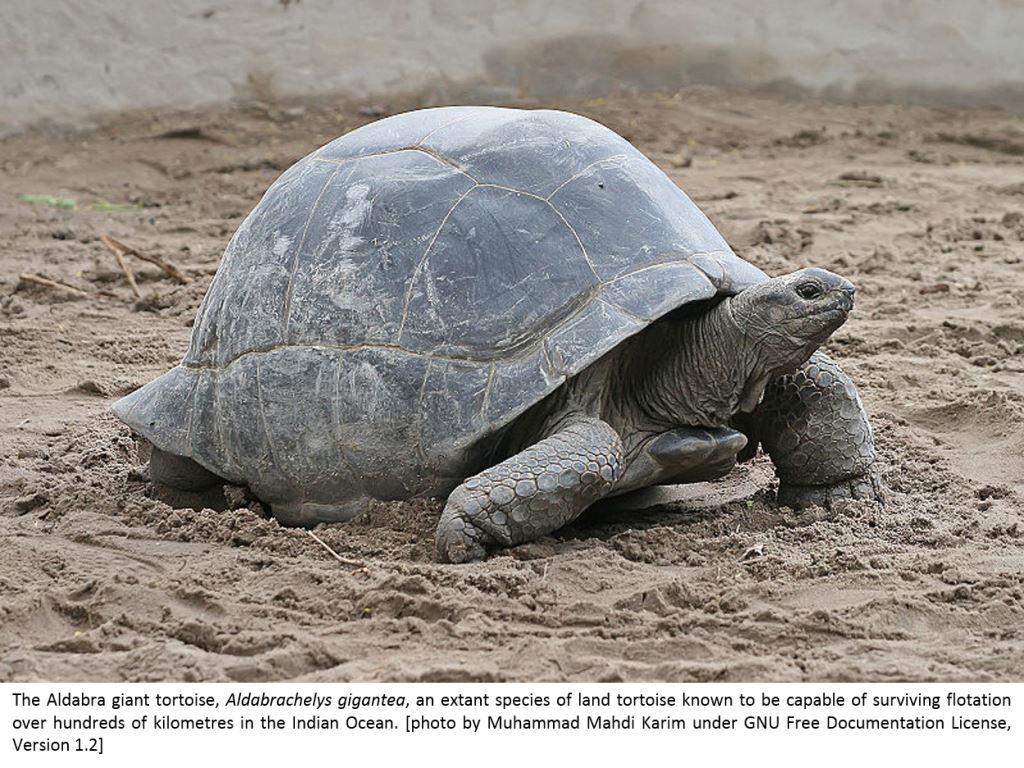
The first explanation, like the hare in the well-known fable, would be the popular bet of Australian biologists. A quick answer has obvious appeal. But the second explanation, like the tortoise in the same fable, may stand the test of time – because this contender is more ponderous but ultimately more probable.
So, using the methodical approach of our tortoise, let’s examine the assumptions that make the popular conclusion – the hare of our biological allegory – a rash one.
How likely, on second thoughts, is it that terrestrial testudines failed to reach Australia over a sweep of millions of years? Hardly. These animals have proved peculiarly mobile despite their staid appearance. Land tortoises have crossed wide seas so many times that they’re among the more successful of non-flying vertebrates to colonise oceanic islands without human help.

And is it really likely that, even if Australia and New Guinea were beyond the transoceanic dispersal of land tortoises, other testudines were incapable of filling their niches? Again: on second thoughts, unlikely. Australia has been an ancestral home for terrestrial and amphibious testudines from the start, and these ancestors have had tens of millions of years to evolve into counterparts for the missing land tortoises.
The fact that land tortoises are native to both the Old World and the Americas is itself testimony to their ability to cross sea gaps. This is because land tortoises evolved after Gondwana split up, and must presumably have floated from Africa across widening seas to reach the Western Hemisphere on one side and Madagascar on the other. And a plod through the more recent track record shows that terrestrial testudines have dispersed to tropical islands in Melanesia, northern and southern Indonesia, the Philippines, Galapagos, the Antilles, the Seychelles, the Mascarenes, and the Comoros plus islands well beyond the tropics in the North Atlantic: Bermuda and Macaronesia. Land tortoises also reached Crete, an isolated Mediterranean island where the only other non-flying vertebrates, such as elephants and hippos, arrived by swimming or rafting.
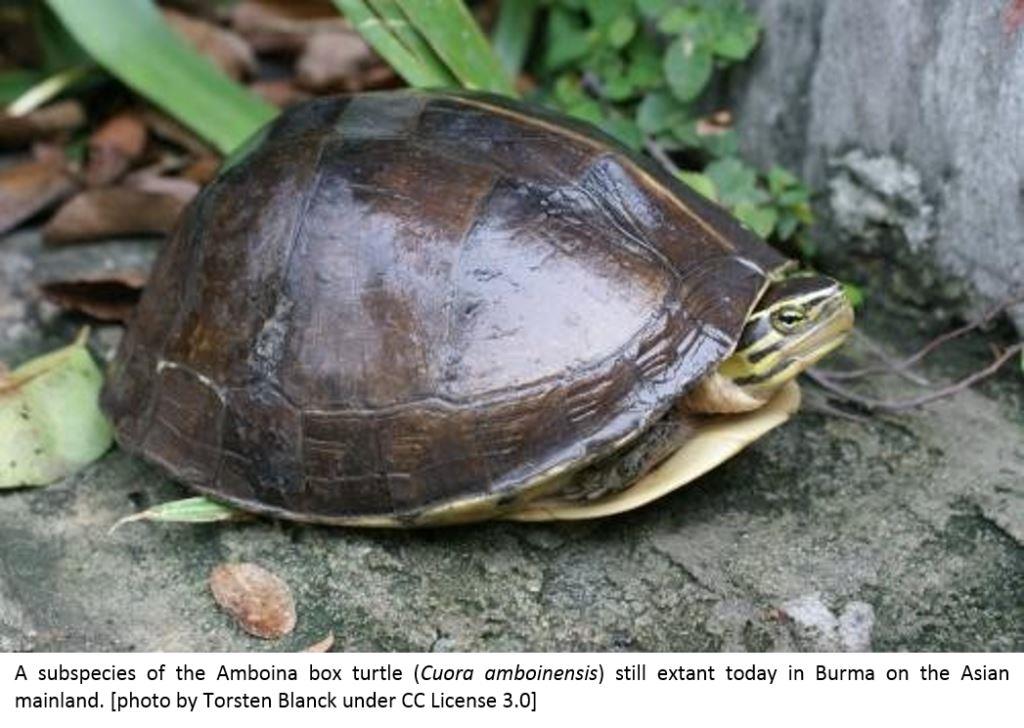
In the case of the Indian Ocean, land tortoises repeatedly reached the atoll of Aldabra – which offers only one-fiftieth the land area of, for example, the Galapagos archipelago in the Pacific – at least three separate times. Fossils suggest that the first two colonisations were wiped out by rises in sea level, but each time the same species[3] managed again to cross some 500 kilometres of open sea from Madagascar. And in the case of the Indo-Pacific, a failure of land tortoises to reach Australia and New Guinea is unlikely because these animals have crossed Wallace’s Line as shown by their occurrence on the oceanic island of Sulawesi, where they coexisted with cockatoos and a marsupial[4]. Most significantly, perhaps the largest[5] of all land tortoises colonised the Sunda chain, island after island, to spread all the way to Timor. This proves that another species not only crossed Wallace’s Line but lived in the Pleistocene on the last outlier of southeast Asia short of Australia. During the lowest sea levels of the Ice Ages, the remaining marine gap between Australia[6] and the island of Timor narrowed to one-tenth[7] of those crossed to reach the Galapagos, the Mascarenes, or islands in the North Atlantic. And we know that at least one individual of the Aldabra tortoise, actually observed as it landed on the East African shore in 2004, had just crossed a sea barrier nearly tenfold wider than the minimum needed to reach Australia in the past.
The peculiar buoyancy of certain land tortoises has yet to be explained zoologically. Even if tortoises hold their breath, the inflation of their small lungs can only be part of the answer. Because the intestines are long, wide and unused for digestion during the fast of a long journey, the main buoy would be swallowed, not inhaled, air. Or at least so the tortoise in our fable might suspect.
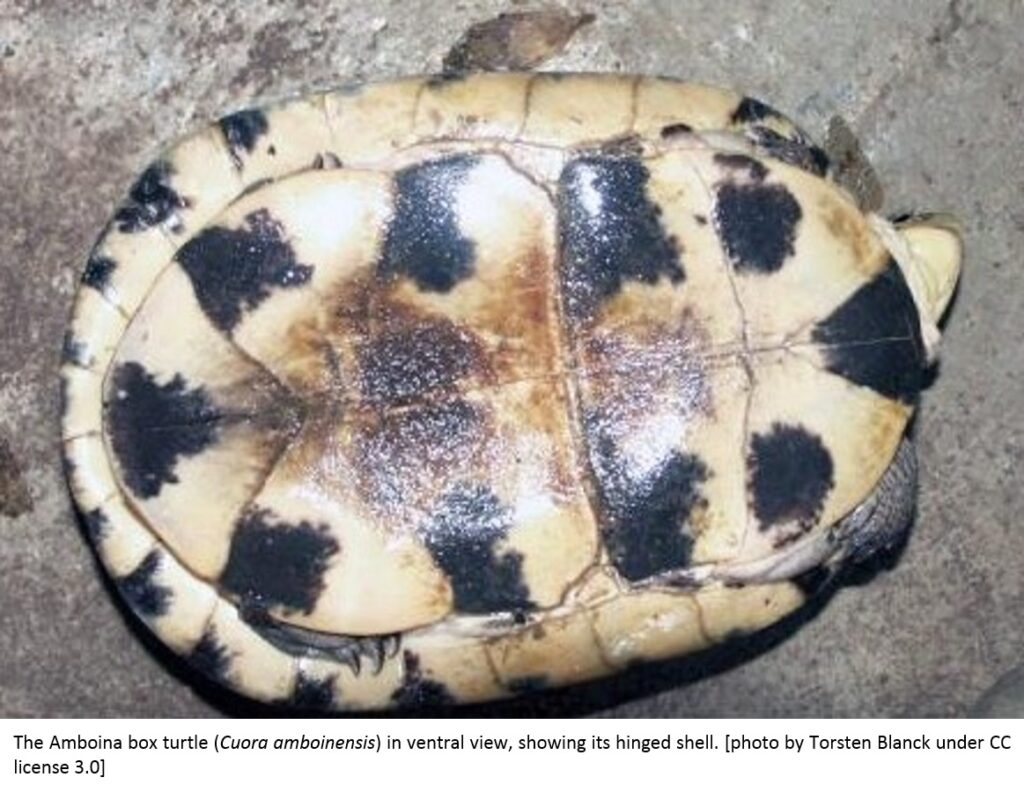
Whatever the exact mechanism of their buoyancy and fasting, and whether they swim or merely drift passively with the current, we know that land tortoises can travel in the water for hundreds of kilometres over a period of months. So it’s a fair bet that they did repeatedly wash up alive on Australian shores over the last few million years, but failed here because the Australian environment was unsuitable.
But do we really need to argue that the island continent has been accessible to land tortoises as foreign colonists? An alternative is convergent evolution in situ, and the potential for that lies in plain sight of our allegorical tortoise even if it hides from the hare. After all, at least four other lineages of testudines originated in Australia in the first place and three of these still inhabit this continent and New Guinea today.
Because testudines arose before the dinosaurs, the presence of shelled reptiles in Australia is more ancient than the continent itself. Even to the mind of the hare, the Australian section of Gondwana must have been home[8] to the same ancestor that, after the end of the dinosaurs, evolved into land tortoises elsewhere. Testudines appeared before Australia separated from South America and Antarctica and continued to evolve locally after this continent took its isolated form, drifting gradually northwards. And indeed, one Gondwanan family actually resembled land tortoises in being terrestrial and plant-eating: the meiolaniids[9] , which survived in Australia until the Pleistocene. We suspect that these giants were exterminated by humans, for fossils show that meiolaniids survived as recently as two thousand years ago on an island of New Caledonia in Melanesia.
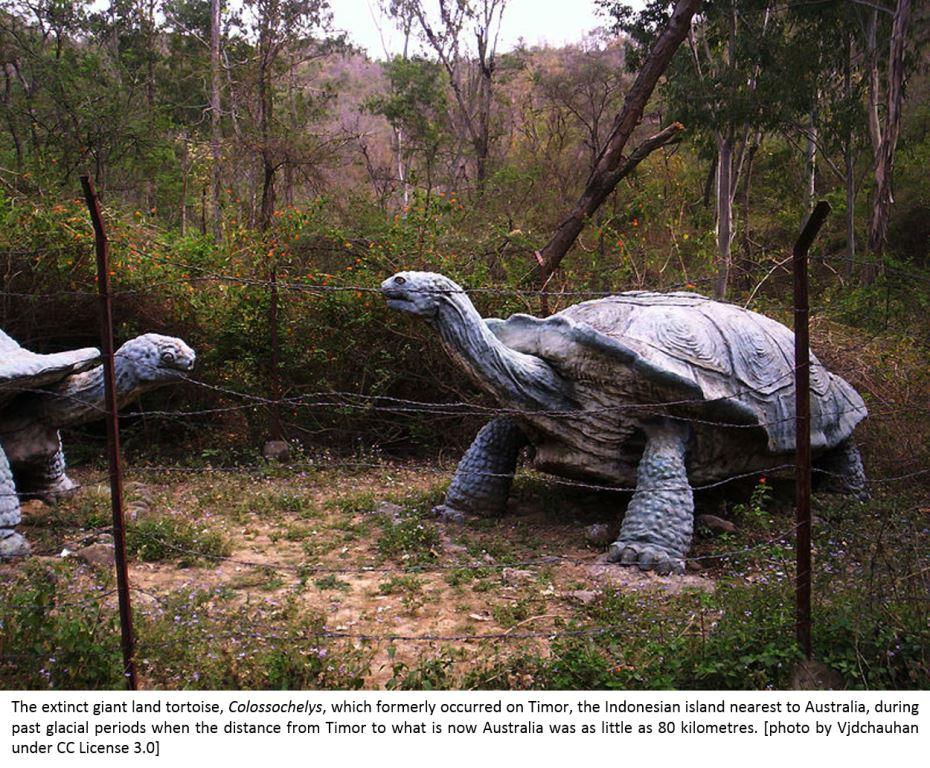
Flipping our question – from whether land tortoises reached Australia to why their more ancient counterparts failed after such long tenure – will put our hare on the back foot. Although the meiolaniids ultimately died out, their survival in Australia for fifty million years should teach us not to be too hasty in assuming that the niches of land tortoises simply stayed vacant. More likely are firstly that the meiolaniids did not have the capacity to survive human onslaught[10] as land tortoises did (in e.g. South America), secondly that land tortoises and partly terrestrial turtles arriving on Australian shores found conditions unsuitable, and thirdly that large lizards such as skinks lacked the selective pressures necessary for convergence with land tortoises.
There are many[11]freshwater-dependent, web-footed, animal-eating testudines in Australia and New Guinea, but these didn’t mutate into any forms looking more like land tortoises than the poorly-known and geographically restricted meiolaniids. The hare would blame this on an evolutionary speed-bump between amphibious and terrestrial habits. More particularly, he would scoff at the chances that the Australian snapping turtles[12], a mainly plant-eating[13] genus of chelids in New Guinea and northern Australia, could have adapted to terrestrial niches. To the hare, it would be obvious that the genes were not plastic enough even if millions of years were available to make this one remaining evolutionary step[14]. But her plodding has brought our tortoise to evidence that the real reason for this failure was the nature of the environment in Australia and New Guinea: one genus[15] closely related to the Australian testudines spends much of its time foraging terrestrially in the tropical forests of South America. This means that same Gondwanan family has proven its genetic plasticity – albeit on a different continent.
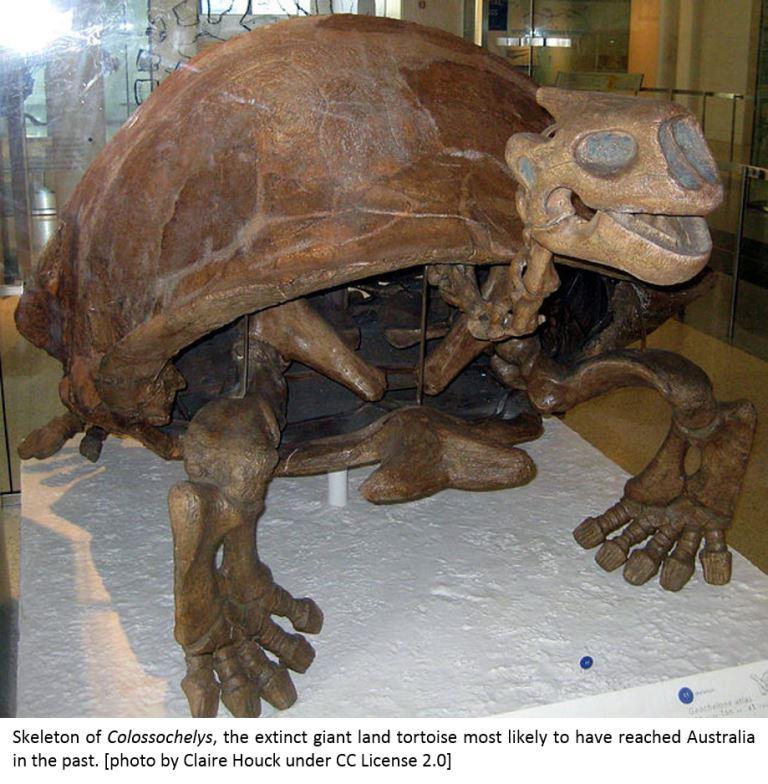
And a transition to plant-eating, terrestrial niches is also evident in the main families of amphibious testudines[16] in the Northern Hemisphere. The following track record implies that niches for land tortoises haven’t really been available in Australia in the first place, and that terrestrial herbivory was barred by unsuitable environments rather than the vagaries of dispersal or mutation. The bet once again shifts from our hare to our tortoise because, as it turns out, the separation between amphibious and terrestrial types depends on ecological rather than genetic factors.
The prime example of this is that the painted wood turtle[17] is terrestrial despite the closely related black river turtle[18], also living in central America, being amphibious. Some other examples: in the American genus of box turtles, one species[19] is aquatic whereas others[20] is terrestrial. The omnivorous genera Clemmys and Glyptemys are neither aquatic nor terrestrial, but intermediate in habitat, foraging typically in soggy meadows. And in the omnivorous southeast Asian genus Cyclemys, the juveniles are aquatic whereas the adults are terrestrial.
Given this adaptive mixing and matching, what has prevented the amphibious testudines of Australia and New Guinea from converging with land tortoises via a simple transition from aquatic to terrestrial foraging?
The hare might scoff at the genetic potential of the Australian snapping turtles to exploit the food available beyond streams and pools. But our allegorical tortoise would demur – not only because of the significance of the American wood turtles[21] and their kin, but also because of three shortcomings of the living testudines in Australia that are hardly mere accidents. These are a failure to survive in Tasmania, a failure to adapt to the tidal zone, and a failure to rival the body sizes found in comparable families on other continents.
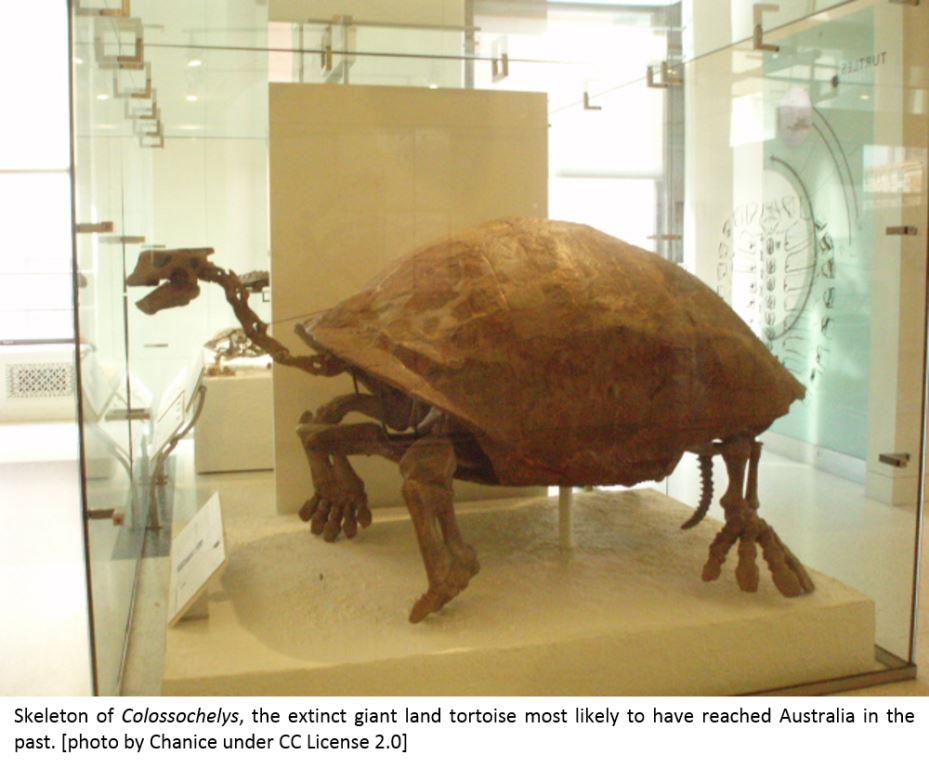
Although Tasmania was joined to the mainland in the Pleistocene, no amphibious testudine survives on this island today. The obvious explanation is that Tasmania is too cool, but several families of amphibious testudines in North America and Europe are cold-tolerant, reaching latitudes[22] in line with southernmost New Zealand. For example, the painted turtle[23] is widespread in southern Canada and reaches British Columbia, swimming even under ice, while the European pond turtle[24] reaches northern Europe. So the extinction of chelids in Tasmania reflects more than cold: perhaps the streams here are poor in food for geological reasons.
Nor does any testudine in Australia prefer the brackish conditions of the tidal zone in emulation of a mollusc-eating species living in salt-marshes in Bermuda and the eastern United States. A cursory explanation is that the salt-tolerant but productive grass Spartina, eaten by an abundant snail[25] in the food-chain supporting the diamondback terrapin[26], is absent from Australia. However, the ultimate reason could be that the Australian saltmarshes lack the natural fertility to support such grasses, snails and, consequently, testudines.
Nor, for that matter, do the testudines in Australia rival any other continent in maximum body sizes. For example, the soft-shelled terrapin[27] of southern Africa reaches 95 centimetres long and 40 kilograms and can lay more than 100 eggs at a time; and the tataruga[28] of the Amazon reaches 107 centimetres and more than 70 kilograms, and lays up to 136 eggs at a time. By contrast the largest species[29] in Australia reaches only 70 centimetres and 22.5 kilograms and lays no more than 30 eggs at a time, hinting at some environmental limitation even in the aquatic niches here. One such limitation is in the supply of nutrients, for Australia is the nutrient-poorest of all continents even in alluvial situations. Australia does not offer enough edible herbaceous plants to constitute a reliable diet owing to its poor soils, and it lacks not just land tortoises but herbivorous reptiles in general.

As the scales are lifted one by one from its eyes, our tortoise can focus on a parallel with Australasia in the granitic islands[30] of the Seychelles. Contrary to popular belief, there is no clear evidence that land tortoises were native to any part of this archipelago other than atolls[31] fertilised by sea birds. Confusion arose because tortoises were moved among the Indian Ocean islands by Arab and Maldivian seafarers for centuries even before the Portuguese first landed in the Seychelles in 1502, and then the whole metapopulation was nearly exterminated by French and British colonists before scientific specimens were taken. But attempts to reintroduce the Aldabra giant tortoise to granitic islands such as Curieuse have failed repeatedly without artificial feeding. So the true pattern from the start may have been that only the nutrient-richest[32] islands supported land tortoises. Also parallel with Australia, the only species of testudine known to be native to a granitic island was the amphibious, animal-eating Seychelles mud turtle[33]. Land tortoises presumably reached all the islands in the Seychelles by flotation; so the prehistoric pattern of distribution of land tortoises here possibly reflected the availability of palatable herbaceous plants and fleshy fruits rather than accidents of access. This must throw the hare off his stride.
Admittedly, not all of Australia is nutrient-poor, and certain habitats should have been able to produce suitable plants. However, two other factors enter the picture: salinity and fire.
Although the salt-excreting glands of marine turtles allow them to survive without sources of fresh water, all land tortoises and amphibious testudines worldwide are vulnerable to excessive salinity. This would be a particular problem on a continent where the nutrient-richest alluvia tend to be saline. Australia is unlike Africa and the Americas in that it lacks any succulent plants[34] that aren’t halophytic. And, partly because much of the island continent is covered by trees, freshwater springs are relatively rare in Australia.
Although in principle the ability of giant land tortoises to survive droughts should suit them to Australia, the wildfires typical of this continent are lethal to land tortoises. A bony shell is more liability than asset in Australia because it makes the animal more, not less, vulnerable to fire. Although various species of land tortoises worldwide dig burrows for refuge from cold and drought, what is most important during wildfire is speed of retreat. And where the quality of food doesn’t allow accumulation of fat, land tortoises cannot afford to aestivate or hibernate during the fire season.
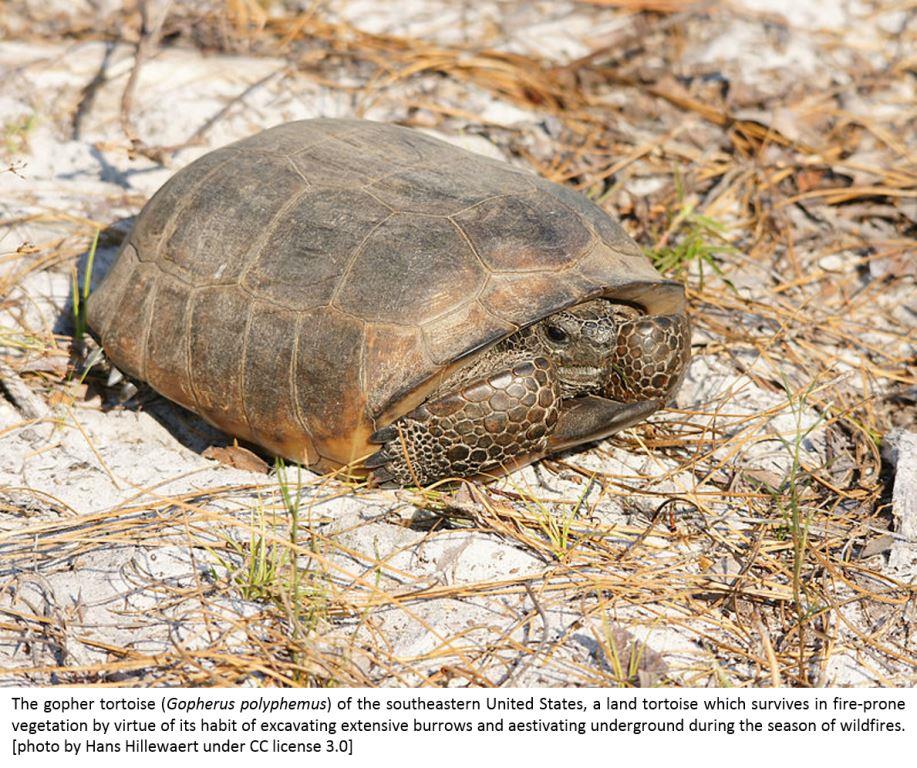
This line of thought leads naturally to a comparison with the most similar subcontinent elsewhere. Despite similar climates and landforms to Australia, the 12 species in five genera of land tortoises in southern Africa range from the smallest[35] on Earth to one[36] rivalling kangaroos in body mass. Southern Africa has several biomes[37] combining nutrient-poor soils with intense fires, and – as our tortoise might by now expect – these parallel Australia in lacking terrestrial testudines. All the land tortoises of southern Africa rely on patches of fire-free vegetation. These cover whole landscapes in the case of the dwarf shrublands and succulent thickets of the semi-arid Karoo and are restricted to small refuges in the case of vine thickets and grazing lawns within grasslands and savannas. In addition, rocky outcrops are more common in southern Africa than in Australia and several species of land tortoises rely on crevices for shelter from fire.
Our allegorical contest has yet to be resolved, but the onus is now on the hasty hare to answer to the tortoise’s steady plod from one question to the next. How could land tortoises really have failed to reach Australia and New Guinea? Why did the native terrestrial, herbivorous testudines already present in Australia succumb to predation by humans? How could the diverse amphibious testudines of Australia fail to make the simple adaptive shift to dry land? And why, even within freshwater habitats, did the Australian testudines fall short of the adaptations of their counterparts elsewhere? It’s now a fair bet that the lack of land tortoises in Australia and New Guinea is owing to the ecological unsuitability of this landmass, rather than a mere accident – or series of accidents – of evolutionary history.
But, as our tortoise knows, time and tide will tell.
***
All text and images appearing in this blog are subject to copyright, except those images explicitly stated to be in the public domain. You are not free to use any photographs, for any purpose, without receiving written permission from the copyright holder.
1 family Testudinidae
2 Pleurodira: Chelidae and Cryptodira: Carettochelyidae
3 Aldabra giant tortoise (Aldabrachelys gigantea)
4 Ailurops
5 Colossochelys atlas, now extinct
6 called Sahul in combination with New Guinea when the two landmasses were broadly connected by dry land in the Pleistocene
7 i.e. at least 1000 kilometres of open sea in each case
8 Testudines appeared in the Triassic, some 220 million years ago, whereas Australia only formed after the Cretaceous, less than 60 million years ago.
9 Meiolaniidae, e.g. Ninjemys (about 200 kilograms) and Warkalania, both recorded from Queensland
10 Although the possible extermination of the last of the meiolaniids suggests the vacation of a niche for animals ecologically similar to land tortoises, what needs explaining is why land tortoises did not vanish after human arrival in South America, where they were equally naive prey. Possibly the reproductive capacity of meiolaniids was inferior to that of land tortoises owing to the adverse conditions in Australia.
11 a total of 32 species
12 i.e. six living and two extinct species of Elseya
13 Although the Carettochelyidae, with their specialised flipper-like forelimbs, were not prime candidates for evolution into land tortoises, even Carettochelys insculpta of Australia and New Guinea is an omnivore including greens such as Vallisneria in its diet.
14 A poorly-known fossil species of Elseya from the Darling Downs, the phosphorus-richest landscape in Australia, may possibly have been terrestrial.
15 Chelidae: Platemys
16 Emydidae and Geoemydidae
17 Rhinoclemmys pulcherrima
18 Rhinoclemmys funerea
19 Terrapene coahuila
20 Terrapene ornata, which is so emancipated from water that one subspecies lives exclusively in semi-arid grassland and dies if kept in a humid atmosphere in captivity
21 Geoemydidae: Rhinoclemmys
22 The Australian mainland reaches only 38 degrees of latitude, whereas North American and European species of amphibious testudines reach beyond 50 degrees.
23 Chrysemys picta
24 Emys orbicularis
25 marsh periwinkle (Littoraria irrorata)
26 Malaclemys terrapin, which drinks fresh water from tidal springs
27 Trionyx triunguis
28 Podocnemis expansa
29 The pig-nosed turtle (Carettochelys insculpta) is the largest freshwater turtle in Australia. Still living in New Guinea today is the second-largest of all freshwater turtles extant on Earth, namely the New Guinea giant softshell turtle (Pelochelys bibronii). This species would have had access to Australia when New Guinea and Australia were one landmass, Sahul, in the Pleistocene; however, it is absent from Australia today with the possible exception of a few Torres Straits islands.
30 comprising 45 of the 115 islands in the Seychelles archipelago
31 Confusion of localities arises because the main atoll, Aldabra, although part of the country of Seychelles, lies more than 1000 kilometres from the geologically different granitic islands inhabited by people.
32 There is no doubt that land tortoises were abundant in the nutrient-rich, volcanic Mascarene archipelago, far to the south of the Seychelles, before being exterminated by humans; the land tortoises of Galapagos also live exclusively on volcanic substrates.
33 Pelusios seychellensis, now extinct
34 e.g. land tortoises in the Americas and Galapagos eat cactuses, while those in Africa eat various non-saline succulents
35 speckled padloper (Homopus signatus)
36 leopard tortoise (Stigmochelys pardalis)
37 e.g. fynbos, sour Highveld, Burkea-Terminalia savanna and miombo woodland

